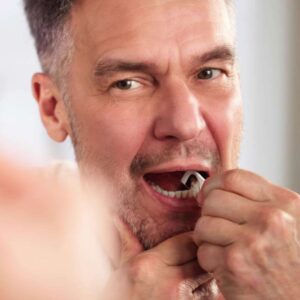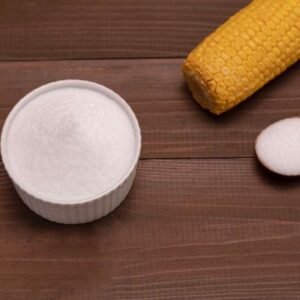
Is Your Bathroom Hiding a Dirty Secret?
Let’s talk about your bathroom. You probably spend much of your day there, from your morning routine to your evening wind-down.
But how clean do you really keep it?
Maybe you’re a neat freak, scrubbing every surface until it sparkles. Or perhaps you’re more of a “clean enough” type, giving things a quick wipe when they start to look questionable.
But here’s the real question: do you close the toilet lid before you flush?
If you’re like most folks, you probably assume that shutting the lid helps contain the, well, “stuff” that swirls around when you flush.
But brace yourself because a new study has revealed a dirty little secret about your porcelain throne.
Researchers from the University of Arizona decided to investigate how much closing the toilet lid really matters when trying to prevent the spread of viruses in your bathroom. They focused on toilets commonly found in U.S. households and public restrooms.
The team added a harmless virus called MS2 (often used as a stand-in for nastier bugs like norovirus) to the toilet bowl water. Then, they flushed with the lid up and down and sampled various bathroom surfaces to see where the virus ended up.
The results were eye-opening, to say the least.
It turns out that closing the lid made almost no difference in terms of viral contamination. MS2 was found on every surface tested, from the toilet seat to the floor to the walls, regardless of lid position.
In fact, the toilet seat itself was the most contaminated spot, likely due to the way the air flows around it during flushing. And public toilets, which often don’t even have lids, showed consistently high levels of MS2 on the seat.
They also looked at what happens when you clean the toilet bowl with a brush, with and without disinfectant. While using a disinfectant significantly reduced the amount of MS2 in the bowl water and on the brush itself, it didn’t completely eliminate contamination on other bathroom surfaces.
So, what does this mean for your health? Well, while MS2 is harmless, the viruses it represents aren’t. Norovirus, for example, can cause nasty bouts of vomiting and diarrhea. And it only takes a tiny amount of these viruses to make you sick.
When you flush, those germs can linger in the air and on surfaces, just waiting for you to touch them and then touch your face or food. It’s a recipe for a sick day (or week).
But don’t panic just yet. There are steps you can take to minimize your risk:
- Add disinfectant to the bowl BEFORE flushing, and let it sit for a few minutes.
- Regularly disinfect ALL bathroom surfaces, not just the toilet.
- Wash your hands thoroughly after using the bathroom, and avoid touching your face.
- If someone in your household is sick, be extra vigilant about cleaning and disinfecting.
Your bathroom may never be 100 percent germ-free, but you can drastically reduce the spread of nasty viruses with a little extra effort.
P.S. Avoid THIS other public restroom hazard. [GROSS!]
Source:
Goforth, M. P., Boone, S. A., Clark, J., Valenzuela, P. B., McKinney, J., Ijaz, M. K., & Gerba, C. P. (2024). Impacts of lid closure during toilet flushing and of toilet bowl cleaning on viral contamination of surfaces in United States restrooms. American Journal of Infection Control, 52(2), 141-146. [doi. org /10.1016/j.ajic.2023.11.020]
Written By Dr. Scott Olson, ND
Nearly 25 years ago, failed mainstream medical treatments left Dr. Olson in constant pain – and his health in ruins. And that’s when he did something REVOLUTIONARY. He began his career in medicine – and dedicated his life to uncovering the true, underlying causes of disease.
Through his innovative medical practices in Tennessee and Colorado, Dr. Olson has helped cure countless seniors from across America of arthritis… heart disease… diabetes… and even cancer. All without risky prescription drugs or painful surgeries.
View More Free Articles
A New Reason to Ditch Processed Junk
If you’ve ever walked the inside aisles of your local grocery store and thought, “This is all just junk,” your instincts were spot on. A new study published in the journal Thorax just added another red flag to the list of dangers linked to ultra-processed food—a 41 percent higher risk of lung cancer. That’s right....
When Being Winded on Stairs Is Serious (And When It Isn’t)
I had an athlete visit me recently because he experienced shortness of breath while climbing stairs. He is in great shape, so he was worried about what it might mean. “Doc,” he said, “I run five miles three times a week. Why am I huffing and puffing after two flights of stairs?” His concern is...
Study EXPOSES Hidden Danger Lurking in Your Car
We think of our homes and cars as safe havens. But according to a startling new study, they may be flooding your lungs with microscopic plastic particles—every single day. Researchers in France recently found that adults inhale an average of 68,000 microplastic particles daily from indoor air alone. To put that in perspective, that’s about...
Mailbag: Is Modern Food Making You Snore?
“What can cause snoring, and is there a way to correct this issue?” —Seeking Silence Hi Seeking, Snoring happens when the soft tissues in your throat relax and vibrate as air passes through during sleep. While several factors can cause snoring—from sleep position to nasal congestion—I want to share one trigger that might surprise you....
Simple Food Swap SLASHES Dementia Risk 28%
Let’s be honest… who would jump at the chance to cut their dementia risk by 28 percent. And no, you don’t need to run marathons, survive on broccoli, or learn to play the zither (whatever that is) to make it happen. All it takes is one easy swap—something that’s probably already in your refrigerator. Researchers...
This SMART Floss Exposes Hidden Health Danger
Scientists have created dental floss that doesn’t just clean between your teeth—it also tracks your stress while you’re flossing. Now, I know what you’re thinking… “Great—now even flossing is going to stress me out by telling me how stressed I am.” But this fascinating new tool from Tufts University could be a game-changer for understanding...
Is This "Safe" Sweetener Damaging Your Brain?
The headlines are alarming… “Popular Sugar Substitute Linked to Brain Cell Damage” and “Erythritol Could Damage Critical Brain Barrier” are just two of the dozens I’ve spotted recently. But before you toss every sugar-free product in your pantry, let’s take a closer look at what this study actually shows—and what it doesn’t. The latest research...
This Summer Threat Could SPIKE Your Blood Sugar
Picture this… It’s another scorching hot summer day. You crank up the air conditioning while watching the weather forecast, which predicts yet another “record-breaking” heat wave. It’s starting to feel like just another miserably uncomfortable summer. But what you might not realize is that—if you have diabetes—those rising temps could do far more damage to...
Move Over Yogurt—5 Foods That Pack MORE Probiotics
Let’s talk about your gut. The microbiome is the collection of trillions of bacteria and other tiny organisms that live in and on your body—especially in your gut—and help keep you healthy. I’ve written often about how vital it is to maintain a healthy microbiome. And you might have dutifully added yogurt to your shopping...
Is Your Heart Older Than YOU?
Maybe you feel young for your age. Good energy, decent sleep, eating your veggies. But what if I told you your heart might be a decade older than the rest of you? That’s exactly what researchers at Northwestern University found in a new study published in JAMA Cardiology. The average American woman’s heart is about...









